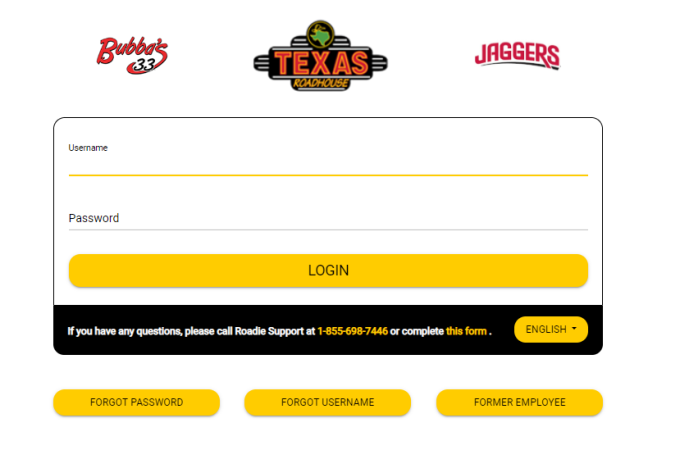
9 Best Practices for a Converting E-commerce Website Design
Long gone are the times of digital window shopping. Your digital storefronts are your business’ heartbeats that thump to the beats of the user. We live in a world where the attention span is shorter than a microwaved coffee mug. Your eCommerce website design can attract or annoy your customers in this short span.
Picture this: your user turns up at your digital doorstep only to find the design complex akin to a mismatched puzzle. In just a matter of seconds, what could be a conversion turned into a bounced user.
Are you aware that 94% of the first impressions of the brand relate to the design? Imagine if you had the superpower that would convert every click into a potential celebration for the brand.
9 Best Practices for a Converting E-commerce Website Design
That’s where the best practices can help you website design the pixel-perfect eCommerce website design. You can learn the top best practices in this article that can help you articulate a design that every user likes.
#1 Take a Mobile-first Approach
Did you know that a mobile-friendly website is likely to increase the number of customers purchasing from your digital outlet by 67%? That is the power of a responsive and mobile-centric eCommerce design.
Customers are more likely to use their smartphones to complete their purchases. If you have a mobile app or site, your user is likely to make an immediate decision.
An eCommerce site that is not designed for handheld devices is equal to lost business for you. Here are a few pointers that will help you design a mobile-first eCommerce application.
- The navigation should be designed so that it is compatible with the mobile interface. Make it accessible on handheld devices. At the same time, use intuitive and user-friendly design strategies.
- Optimize the different website elements such as images, videos, text, and others to ensure fast loading. If your website doesn’t load within 3 seconds, you will increase bounce rates.
- Allow for responsive designs so the layout can fit into the screen size and type seamlessly.
- Use elements in the design that are touch-friendly. This will ensure frictionless interaction and enhance the experience.
- Keep the content precise so users can engage with their mobile devices. Ensure to include impactful content.
- Make sure the design is suited for thumb and finger interactions. Keep user behavior in mind while designing the mobile elements.
Also Read: JoinPD.com – Peardeck Login Full Guide – Updated 2024
#2 Simplify Checkout Processes
If you want mere clicks to convert into customers, you must use a simple yet effective checkout process. People are bothered by the length of the checkout. It is especially true if they have to fill out too many details in the form.
However, you can reduce the frustrations and make your visitors happy by using single-click checkout. You can move the customers from their cart to payment using a single click. This will ensure that your carts are not abandoned in the process.
- Account integrations are a great way to satisfy your visitors. They can use their existing social media or email accounts to sign up. It reduces the registration process.
- Offer express checkout options extended by popular gateways including PayPal and Google Pay.
- Allow the users to auto-fill in their details. This would ensure they stay on the page and finish the registration.
- If a user doesn’t want to register to your site, they should be allowed to checkout as a guest. Make sure they can still track their products being shipped.
- Make sure to offer feedback in the form of transaction confirmation and loading to ensure the user has a smooth checkout experience.
#3 Compelling Call-to-Action (CTA)
A CTA prompts action from the user and is an important part of your eCommerce website design. It is the orchestrator of your user’s journey across the website.
However, it is not just the context of the CTA but also its placement, which plays a pivotal role. You must ensure that they can capture the user’s attention and transform them into users of your products.
There are a few ways in which you can optimize the CTAs and make them impressionable for the website.
- It is important to grab your user’s attention with the CTA. You can use contrasting colors that can perform this task effectively.
- The copy of your CTA should create a sense of urgency. If you add value, your customer is likely to take a positive action.
- Consistency is the key to winning your users over again and again. You must ensure similar fonts and colors to enhance credibility.
- The value proposition in your CTA should be clear and valuable.
- Make sure to conduct an A/B testing to determine which CTA will drive more engagement to your page.
#4 User-centric Product Pages
If your product page doesn’t interact with the user’s intent, your customer is likely to bounce away. You must add content that helps the user gain more knowledge about your product.
Whether you want to offer a sneak peek into the product or a complete demo is your choice. The page should give all the details that would help the user make an informed decision. A detailed product page is likely to convert your visitor into a customer faster.
Here are a few best practices to help implement the best product pages for your eCommerce site.
- Adding detailed descriptions of the product is key to drawing more attention. You can offer features, benefits, and specifications to engage the user.
- Highlight the positive impact of your product on the user’s life with customer reviews. Most decisions are made using positive reviews and ratings.
- Images and videos can help the users know more about the product. They would get a better idea of the actual size, usage, and other factors that command the decision.
- Navigating through the page should be easy and seamless. Make sure it is mobile-optimized for the best smartphone experience.
#5 Integrate Social Proof
Once people trust your brand, they will purchase from you. User-generated content that showcases positive experiences of the product can increase brand credibility.
You can utilize social media integrations that showcase how your product has transformed a user’s life. Another way to highlight the positive side of your product is to showcase real-time product purchases via notifications.
You can integrate social proof for the best outcomes using these best practices
- Share as many reviews and testimonials as possible via your page. Highlight the user’s experiences to improve your brand’s image
- Add social media widgets to your website to showcase real-time user interactions and their comments for others to read
- If a user has purchased the product in real time, add it to the notifications tab. This would pique interest and get your visitor to complete the purchase as well
- Testimonials and honest video reviews can capture your users’ attention and help them gain maximum insights
- Add trust badges and certifications to highlight your brand’s credibility
#6 Transparency Across the Site
Transparency is what elevates your brand’s credibility. A lot of users would trust you and your products if you have added transparent policies.
Whether it is your customer support, policies, or product information, you must ensure transparency throughout.
You can use these key practices to ensure conversion through transparency.
- Make sure you have added all the correct information regarding your product. Ensure you have been honest about the specifications and features.
- Pricing should include all the additions you will charge the customer on completing the purchase. If you have hidden charges, you will lose the customer to competition.
- It is important to communicate the shipping-related information in advance. Be clear if you have added shipping charges or if there is a minimal purchase amount.
- The return policies should be available for viewing on the website. It should be crisp, enough for users to understand how to replace or return a product.
- Make sure to add all the honest reviews regarding the product. Add both positive and negative reviews.
- You should add contact information at all places where customers are likely to interact. This will allow them to connect with you when needed.
#7 Optimize the Loading Speed
If a mobile page load time is 10 seconds, it increases the bounce rate by 123%. At least 1 in 4 visitors would abandon a site that takes more than 3 seconds to load. Yahoo was able to increase traffic by 9% by reducing its page load time by 0.4 seconds.
All these statistics indicate the importance of your page load time. If you can accelerate the loading speed, you can improve the traffic and conversion rate for your business.
Page loading time is the secret sauce to a high-converting eCommerce website. So, how do you ensure that your page loading speed is at an all-time high?
- Compress the images on the website using tools that don’t compromise the quality. This would ensure faster loading of the images and the pages.
- You can leverage the browser caching technique to improve the load time. The website would load faster when there is a repeat visit.
- You can use Content Delivery Networks that allow you to distribute content across the servers. As a result, your website will load faster.
- You can use minification to minify the CSS, HTML, and JavaScript files. This would remove unnecessary characters, files, and spaces. It can improve the loading speed.
- By implementing lazy loading on the e-commerce website, you load content only when the user interacts with it. This can augment the speed.
- Redirects are the cause of trouble for your website. To accelerate loading, you must reduce the number of redirects.
#8 Incorporate Apt Data Security
When you are operating in the digital realm, your data is your biggest asset. When it falls prey to vulnerability, you will destroy your reputation and credibility. It is important to plan and improve the data security measures for your business.
To ensure more credibility in the online realm, you must work on enhancing your data’s security and privacy policies. You must follow the recommended practices suggested by web development services to ensure your site follows the security protocols.
- You must implement the SSL certificate to the eCommerce website. This will encrypt the data that moves from the client interface to the database.
- You must audit your website regularly to check for risks, bugs, and data vulnerabilities. Have a proper plan in place to address these threats.
- You can implement two-factor authentication to protect all the accounts. This way the data cannot be accessed by anyone other than the user.
- Patch your website with the software updates. This will ensure your site is protected by the latest security services.
- While addressing the potential threats is important, you must also have a proper response plan. This will ensure you can speed up the responses against vulnerabilities that have occurred.
#9 Conduct A/B Testing
A/B testing is an effective way to ensure your design stays user-centric. It helps improve your design using the immediate feedback and concerns added by the users.
The users will use the feedback loops to share their experiences that can help you enhance the elements. You can use this method to test two different pages or site designs as well.
As a business, you can implement these best approaches for testing.
- Define a clear hypothesis that helps you determine the specific outcome you expect. This will help you design the test case and the strategy better.
- Determine the user segment you aim to test for the particular hypotheses
- Test one element at a time so that you can implement the changes better.
- You must monitor your website’s performance against the latest trends to identify the issues. Maintain logs to make informed decisions.
- Ensure you use key performance indicators to gain insights into the site’s performance.
- Lastly, you must test the site across multiple platforms and devices before deriving the conclusions.
Conclusion
Your eCommerce website is your digital storefront that casts your brand’s first impression on the customers. If you cannot excite your target users, you may experience attritions and losses.
The design is an important factor that enables extensive brand conversions. If you can implement the right design practices, you may attract and engage the visitors enough to convert them.
Transparency, credibility, and trust are key factors in maximizing conversions. You can use social proof, clear content, and testimonials to ensure these aspects. Moreover, underlined CTA with personalization can translate more visitors into users.
It is important to work with a dynamic and talented e-commerce development company for the best design outcomes. They would implement the design best practices, offer in-depth content solutions, and compel users to convert via actionable CTAs.
Harsh Mistri is a Digital Marketing Consultant and professional Blogger. He has 6+ years of experience in SEO, SMO, ASO, Blogging, ORM & Google Ads. He loves Blogging Very Much.




